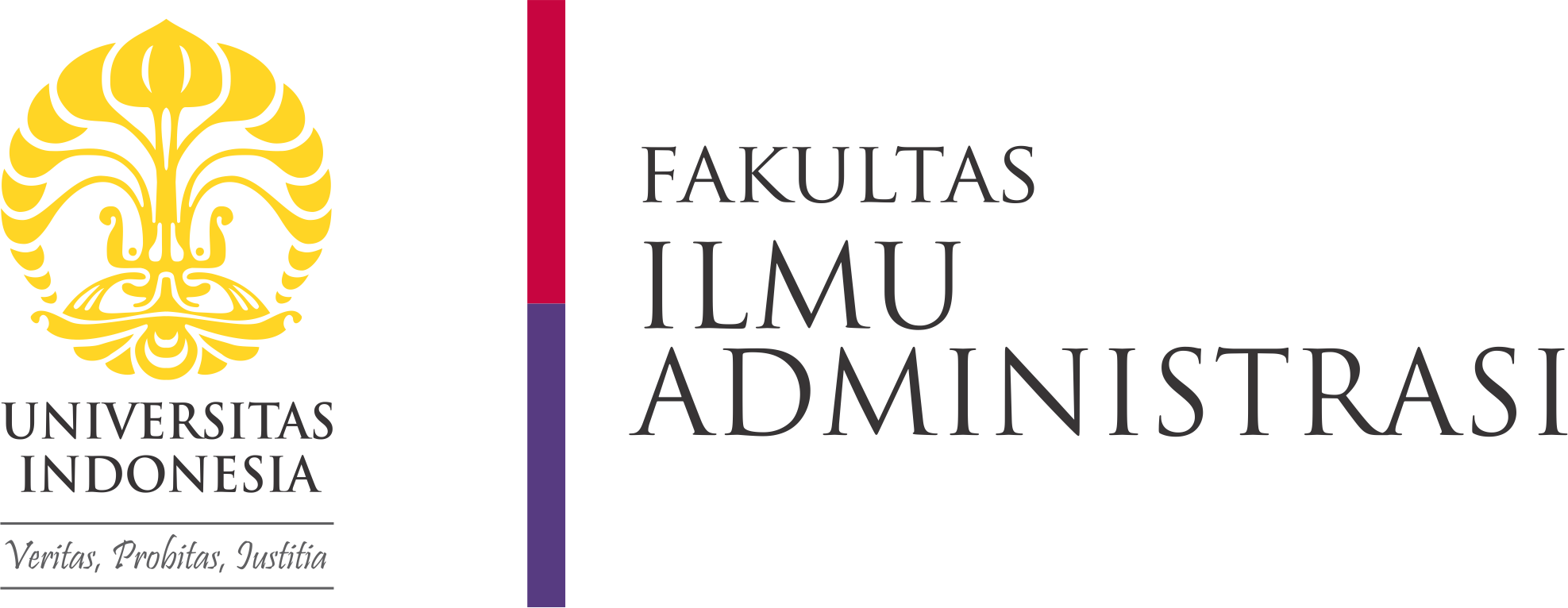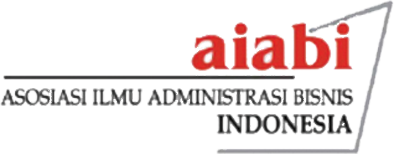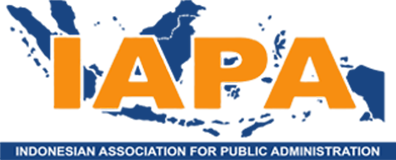Creative Commons License

This work is licensed under a Creative Commons Attribution-Share Alike 4.0 International License.
Abstract
Agile governance plays a crucial role in developing agile innovation to enhance performance in Palu Municipality. This study examines the critical success factors of agile innovation management (AIM) in the government of Palu Municipality. This study employed an exploratory survey and a quantitative method to collect data through questionnaires, with analysis conducted using the Structural Equation Modeling (SEM) method. The findings identify end-user involvement, technology development, organizational innovation, and agile methodology for service innovation as crucial success elements in achieving effective AIM
References
Abdul-Aziz, A.-R., & Jahn Kassim, P. S. (2011). Objectives, success and failure factors of housing public–private partnerships in Malaysia. Habitat International, 35(1), 150–157. https://doi.org/10.1016/j.habitatint.2010.06.005
Afuah, A. N., & Prakah Asante, K. O. (2015). Innovation Models. In Wiley Encyclopedia of Management (pp. 1–8). John Wiley & Sons, Ltd. https://doi.org/10.1002/9781118785317. weom130015
Aghmiuni, S. K., Siyal, S., Wang, Q., & Duan, Y. (2019). Assessment of factors affecting innovation policy in biotechnology. Journal of Innovation & Knowledge. https://doi.org/10.1016/j.jik. 2019.10.002
Aksoy, L., Alkire, L., Cho, S., Kim, P. B., & Zhang, L. (2019). Social innovation in service: A conceptual framework and research agenda. Journal of Service Management. https://doi.org/10.1108/JOSM-11-2018-0376
Alharbi, I. B. A., Jamil, R., Mahmood, N. H. N., & Shaharoun, A. M. (2019). Organizational Innovation: A Review Paper. Open Journal of Business and Management, 7(3), Article 3. https://doi.org/10.4236/ojbm.2019.73084
Almeida, P., Hohberger, J., & Parada, P. (2015). Informal Knowledge and Innovation. In Handbook of Organizational Learning and Knowledge Management (pp. 383–402). John Wiley & Sons, Ltd. https://doi.org/10.1002/9781119207245.ch18
Alvertis, I., Koussouris, S., Papaspyros, D., Arvanitakis, E., Mouzakitis, S., Franken, S., Kolvenbach, S., & Prinz, W. (2016). User Involvement in Software Development Processes. Procedia Computer Science, 97, 73–83. https://doi.org/10.1016/j.procs.2016.08.282
Alves, M. F. R., Galina, S. V. R., & Dobelin, S. (2018). Literature on organizational innovation: Past and future. Innovation & Management Review, 15(1), 2–19. https://doi.org/10.1108/INMR-01-2018-001
Amajuoyi, P, Benjamin, L.B, & Adeusi, K.B (2024). Agile methodologies: Adapting product management to rapidly changing market conditions, GSC Advanced Research and Reviews, https://doi.org/10.30574/gscarr. 2024.19.2.0181
Andhika, L. R., Nurasa, H., Karlina, N., & Candradewini, C. (2018). Logic Model of Governance Innovation and Public Policy in Public Service. Policy & Governance Review, 2(2), Article 2. https://doi.org/10.30589/pgr.v2i2.86
Anindra, F., Supangkat, S. H., & Kosala, R. R. (2018). Smart Governance as Smart City Critical Success Factor (Case in 15 Cities in Indonesia). 2018 International Conference on ICT for Smart Society (ICISS), 1–6. https://doi.org/10.1109/ICTSS.2018.8549923
Aristodemou, L., Tietze, F., O’Leary, E., & Shaw, M. (2019). A Literature Review on Technology Development Process (TDP) Models. Centre For Technonogy Managemet, 9.
Baldwin, C., & Hippel, E. von. (2011). Modeling a Paradigm Shift: From Producer Innovation to User and Open Collaborative Innovation. Organization Science, 22(6), 1399–1417. https://doi.org/10.1287/orsc.1100.0618
Bartlett, D., & Dibben, P. (2002). Public Sector Innovation and Entrepreneurship: Case Studies from Local Government. Local Government Studies, 28(4), 107–121. https://doi.org/10.1080/714004159
Bataineh, M. J., Sánchez-Sellero, P., & Ayad, F. (2023). The role of organizational innovation in the development of green innovations in Spanish firms. European Management Journal. https://doi.org/10.1016/j.emj.2023.01.006
Beer, P., & Mulder, R. H. (2020). The Effects of Technological Developments on Work and Their Implications for Continuous Vocational Education and Training: A Systematic Review. Frontiers in Psychology, 11. https://www.frontiersin.org/articles/10.3389/fpsyg.2020.00918
Bekkers, V., & Tummers, L. (2018). Innovation in the public sector: Towards an open and collaborative approach. International Review of Administrative Sciences, 84(2), 209–213. https://doi.org/10.1177/0020852318761797
Berzin, S., Pitt-Catsouphes, M., & Gaitan-Rossi, P. (2016). Innovation and Sustainability: An Exploratory Study of Intrapreneurship Among Human Service Organizations. Human Service Organizations: Management, Leadership & Governance, 40(5), 540–552. https://doi.org/10.1080/23303131. 2016.1184207
Birkinshaw, J., Hamel, G., & Mol, M. J. (2008). Management Innovation. Academy of Management Review, 33, 825–845. https://doi.org/10.5465/AMR.2008.34421969
Bolmsten, J., & Kitada, M. (2020). Agile social learning – capacity-building for sustainable development in higher education. International Journal of Sustainability in Higher Education, 21(7), 1563–1586. https://doi.org/10.1108/IJSHE-07-2019-0212
Boris, O. H. (2015). Challenges Confronting Local Government Administration in Efficient and Effective Social Service Delivery: The Nigerian Experience. Research Centre for Management and Social Studies International Journal of Public Administration and Management Research (IJPAMR), 2(5).
Chege, S. M., & Wang, D. (2020). Information technology innovation and its impact on job creation by SMEs in developing countries: An analysis of the literature review. Technology Analysis & Strategic Management, 32(3), 256–271. https://doi.org/10.1080/09537325.2019.1651263
Chege, S. M., Wang, D., & Suntu, S. L. (2020). Impact of information technology innovation on firm performance in Kenya. Information Technology for Development, 26(2), 316–345. https://doi.org/10.1080/02681102.2019.1573717
Chiva, R., Ghauri, P., & Alegre, J. (2014). Organizational Learning, Innovation and Internationalization: A Complex System Model. British Journal of Management, 25(4), 687–705. https://doi.org/ 10.1111/1467-8551.12026
Crossan, M. M., & Apaydin, M. (2010). A Multi-Dimensional Framework of Organizational Innovation: A Systematic Review of the Literature. Journal of Management Studies, 47(6), 1154–1191. https://doi.org/10.1111/j.1467-6486.2009.00880.x
Damanpour, F. (2014). Footnotes to Research on Management Innovation. Organization Studies, 35(9), 1265–1285. https://doi.org/10.1177/0170840614539312
Damanpour, F. (1991). Organizational Innovation: A Meta-Analysis of Effects of Determinants and Moderators. The Academy of Management Journal, 34(3), 555–590. https://doi.org/10.2307/256406
Damanpour, F., & Evan, W. M. (1984). Organizational innovation and performance: The problem of “organizational lag.” Administrative Science Quarterly, 29, 392–402. https://doi.org/ 10.2307/2393031
Dillon, S., Buchanan, J., & Corner, J. (2010). Comparing Public and Private Sector Decision Making: Problem Structuring and Information Quality Issues. 229-237.
Dimitrijević, M., Milojkovic, J., Bojanic, S., & Litovski, V. (2011). ICT and power: Synergy and hostility. https://doi.org/10.1109/TELSKS.2011.6112031
Dullemond, K., van Gameren, B., & van Solingen, R. (2009). How Technological Support Can Enable Advantages of Agile Software Development in a GSE Setting. 2009 Fourth IEEE International Conference on Global Software Engineering, 143–152. https://doi.org/ 10.1109/ ICGSE.2009.22
Esposito, M. (2015). End User Participation in Information Systems Development: Why does Collaboration Remain Elusive? Proceedings of the Southern Association for Information Systems Conference, Hilton Head Island, SC, USA.
Fangmann, J., Looks, H., Thomaschewski, J., & Schön, E.-M. (2020). Agile transformation in e-government projects. 2020 15th Iberian Conference on Information Systems and Technologies (CISTI), 1–4. https://doi.org/10.23919/ CISTI49556.2020.9141094
Ferreira, B., Kalinowski, M., Gomes, M. V. de C., Marques, M. C., Lopes, H., & D.J. Barbosa, S. (2021). Investigating Problem Definition and End-User Involvement in Agile Projects that Use Lean Inceptions. Proceedings of the XX Brazilian Symposium on Software Quality, 1–10. https://doi.org/10.1145/ 3493244.3493268
Findsrud, R. (2020). An Agile Approach to Service Innovation: Creating Valuable Service Innovation with Agile Resource Integration. Journal of Creating Value, 6(2), 190–207. https://doi.org/10.1177/ 2394964320961886
Fisher-Vanden, K., & Ho, M. S. (2010). Technology, development, and the environment. Ournal of Environmental Economics and Management, 59(1), 94–108. https://doi.org/10.1016/ j.jeem. 2009.08.002
Gustafsson, A., Snyder, H., & Witell, L. (2020). Service Innovation: A New Conceptualization and Path Forward. Journal of Service Research, 23(2), 111–115. https://doi.org/10.1177/ 109467 052 0908929
Hair, J. F., Black, W. C., Babin, B. J., & Anderson, R. E. (2014). Multivariate Data Analysis, 7th ed. (7th ed.). Pearson Education Limited.
Hair, J. F., Hult, G. T. M., Ringle, C. M., & Sarstedt, M. (2016). A primer on partial least squares structural equation modeling (PLS-SEM). (2nd ed., Vol. 2). SAGE Publication Inc.
Highsmith, J., & Cockburn, A. (2001). Agile software development: The business of innovation. Computer, 34(9), 120–127. https://doi.org/10.1109/2.947100
Hsiao, R. L., & Ormerod, R. J. (1998). A new perspective on the dynamics of information technology-enabled strategic change. Information Systems Journal, 8(1), 21–52. https://doi.org/ 10.1046/j.1365-2575.1998.00003.x
Ives, B., & Olson, M. H. (1984). User Involvement and MIS Success: A Review of Research. Management Science, 30(5), 586–603. https://www.jstor.org/stable/2631374
Kupi, M., & McBride, K. (2016). Agile Development for Digital Government Services: Challenges and Success Factors. Fortcoming.
Lee, J., Bae and, Z., & Choi, D. (1988). Technology development processes: A model for a developing country with a global perspective. R&D Management, 18(3), 235–250. https://doi.org/10.1111/ j.1467-9310.1988.tb00590.x
Lipp, B., Baudrin, M., Cuevas-Garcia, C., Pepponi, F., Rozwadowska, M., & Tsui, S. (2023). Co-creating end-user roles. Understanding the new variety of user involvement in public sector innovation. Science and Public Policy, 50(1), 146–159. https://doi.org/10.1093/ scipol/ scac050
Magnusson, P. R., Matthing, J., & Kristensson, P. (2003). Managing User Involvement in Service Innovation: Experiments with Innovating End Users. Journal of Service Research, 6(2), 111–124. https://doi.org/ 10.1177/1094670503257028
Malalgoda, C., Amaratunga, D., & Haigh, R. (2016). Overcoming challenges faced by local governments in creating a resilient built environment in cities. Disaster Prevention and Management: An International Journal, 25(5), 628–648. https://doi.org/10.1108/DPM-11-2015-0260
Malyshev, N. (2002). The Evolution of Regulatory Policy in OECD Countries. OECD. www.oecd.org/countrylist
Mergel, I. (2016). Agile innovation management in government: A research agenda. Government Information Quarterly, 33(3), 516–523. https://doi. org/10.1016/j.giq.2016.07.004
Mergel, I. (2019a, February 8). Defining digital leadership in the public sector. Digital Innovations in the Public Sector. https://inesmergel.wordpress.com/2019/02/08/defining-digital-leadership-in-the-public-sector/
Mergel, I. (2019b). Digital service teams in government. Government Information Quarterly, 36(4), 101389. https://doi. org/10.1016/j.giq.2019.07.001
Mockford, C., Staniszewska, S., Griffiths, F., & Herron-Marx, S. (2012). The impact of patient and public involvement on UK NHS health care: A systematic review. International Journal for Quality in Health Care, 24(1), 28–38. https://doi.org/10.1093/intqhc/mzr066
Moolakkattu, J. S., & Chathukulam, J. (2022). Challenges to Local Governance in the Pandemic Era: Perspectives from South Asia and Beyond. Cambridge Scholars Publishing.
Noteboom, C, Ofori, M, Sutrave, K, & El-Gayar, O (2021. Agile Project Management: A Systematic Literature Review of Adoption Drivers and Critical Success Factors, Proceedings of the 54th Hawaii International Conference on System Sciences, https://hdl.handle.net/10125/71434 978-0-9981331-4-0
Nuottila, J., Aaltonen, K., & Kujala, J. (2022). Challenges of adopting agile methods in a public organization. International Journal of Information Systems and Project Management, 4(3), 65–85. https://doi.org/10.12821/ijispm040304
Pöhlmann, M, Seitz, J, Jambrino-Maldonado, C, & de las Heras-Pedrosa, C. (2024). Conceptualizing Agile Branding: Dimensions and Antecedents for Managing Brands in a Dynamic Environment, Administrative Science, 14, 112, https://doi.org/10.3390/ admsci14060112
Robertson, T. S., & Gatignon, H. (1998). Technology Development Mode: A Transaction Cost Conceptualization. Strategic Management Journal, 19(6), 515–531. https://doi.org/3094044
Schmidthuber, L., & Wiener, M. (2018). Aiming for a sustainable future: Conceptualizing public open foresight. Public Management Review, 20(1), 82–107. https://doi.org/10.1080/ 14719037 .2017.1293145
Serrador, P., & Pinto, J. K. (2015). Does Agile work? — A quantitative analysis of agile project success. International Journal of Project Management, 33(5), 1040–1051. https://doi.org/10.1016/ j.ijproman.2015.01.006
Sharma, S., Sarkar, D., & Gupta, D. (2012). Agile Processes and Methodologies: A Conceptual Study. International Journal on Computer Science and Engineering (IJCSE), 4(5), 892–898.
Sjödin, D., Parida, V., Kohtamäki, M., & Wincent, J. (2020). An agile co-creation process for digital servitization: A micro-service innovation approach. Journal of Business Research, 112, 478–491. https://doi.org/10.1016/j.jbusres.2020.01.009
Sun, Z. (2013). User Involvement in System Development Process. 410–413. https://doi.org/10.2991/ iccsee.2013.105
Tabachnick, B. G., & Fidell, L. S. (2013). Using multivariate statistics (International Edition). Pearson.
Thompson, J., Barber, R., Ward, P. R., Boote, J. D., Cooper, C. L., Armitage, C. J., & Jones, G. (2009). Health researchers’ attitudes towards public involvement in health research. Health Expect, 12, 209–220. https://doi.org/10.1111/j.1369-7625.2009.00532.x
Tronvoll, B., Sklyar, A., Sörhammar, D., & Kowalkowski, C. (2020). Transformational shifts through digital servitization. Industrial Marketing Management, 89, 293–305. https://doi.org/10.1016/j.indmarman.2020.02.005
van Hillegersberg, J., Ligtenberg, G., & Aydin, M. N. (2011). Getting Agile Methods to Work for Cordys Global Software Product Development. In J. Kotlarsky, L. P. Willcocks, & I. Oshri (Eds.), New Studies in Global IT and Business Service Outsourcing (pp. 133–152). Springer. https://doi.org/10.1007/978-3-642-24815-3_8
Warner, M. E. (2010). The Future of Local Government: Twenty-First-Century Challenges. Public Administration Review, 70, S145–S147. https://doi.org/ 10.1111/j.1540-6210.2010.02257.x
Wiener, J. B. (2004). The regulation of technology, and the technology of regulation. Technology in Society, 26(2–3), 483–500. https://doi.org/10.1016/ j.techsoc.2004.01.033
Yström, A., Ollila, S., Agogué, M., & Coghlan, D. (2019). The Role of a Learning Approach in Building an Interorganizational Network Aiming for Collaborative Innovation. The Journal of Applied Behavioral Science, 55(1), 27–49. https://doi.org/10.1177/0021886318 793383
Zawislak, P. A., Cherubini Alves, A., Tello-Gamarra, J., Barbieux, D., & Reichert, F. M. (2012). Innovation Capability: From Technology Development to Transaction Capability. Journal of Technology Management & Innovation, 7(2), 14–27. https://doi.org/10.4067/S0718-27242012000200002
First Page
98
Last Page
107
Recommended Citation
Halim, Rahmawati RHM and Tahili, Mashuri H. MHT
(2024)
"Critical Success Factors of Agile Innovation Management in the Government of Palu Municipality in Central Sulawesi Province,"
BISNIS & BIROKRASI: Jurnal Ilmu Administrasi dan Organisasi: Vol. 31:
No.
2, Article 4.
DOI: 10.20476/jbb.v31i2.1433
Available at:
https://scholarhub.ui.ac.id/jbb/vol31/iss2/4
Included in
Business Administration, Management, and Operations Commons, Organizational Behavior and Theory Commons, Other Public Affairs, Public Policy and Public Administration Commons, Public Administration Commons






